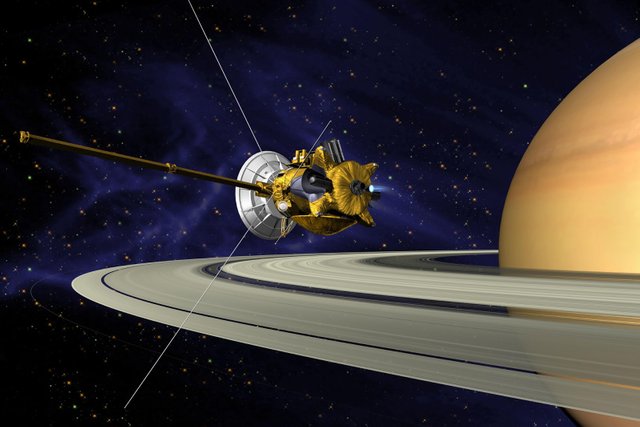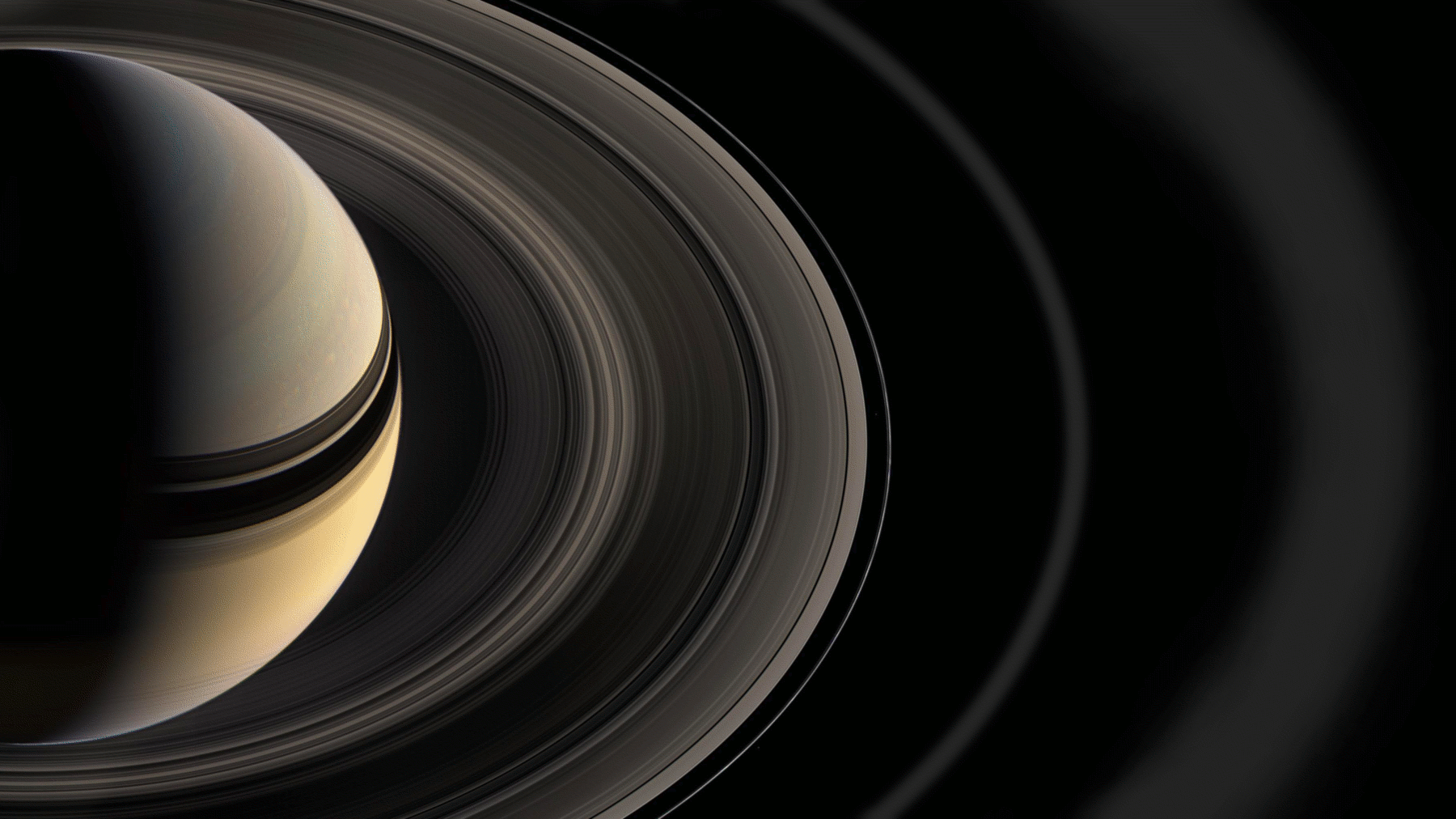Cassini is preparing for its final mission: journey to Saturn's rings fatal immersion in the atmosphere of the planet
The probe Cassini during its work (it started in 1997) has provided scientists a wealth of data about the planets of the solar system and their satellites. For example, use it to have found an ocean on Enceladus, and the sea of liquid methane on Titan. Now experts are preparing the unit to one of the last missions - the study of Saturn's rings. Starting from November 30, Cassini will go into its "circular tour".
From 30 November this year to 22 April of the following year the unit will move from pole to pole of the gas giant, passing along the way, every seven days, through the outer region of the main rings of the planet. In total it will make 20 of these "shuttle" passes. The probe is equipped with multiple scientific instruments that will be used for the selection of particulate matter and gases from various parts of rings of Saturn, followed by analysis of the obtained samples.
The first two "dive" Cassini will take place through one of the thinnest and weakest of Saturn's rings formed by tiny meteors striking the planet's two moons - Janus and Epimetheus. In March and April, the probe will explore the outer regions of the ring F, characterized by large amounts of dust.
"Despite the fact that we are closer to the F ring is closer than ever, it is still more than 7800 kilometers. There is practically no dust threat, "- said Earl Mays, the Cassini project manager at NASA's Jet Propulsion Laboratory.
According to experts, this ring is the outer boundary of the main ring system. Apart from these, Saturn has a few more faint rings that are farther away from the planet. The F ring, the width of which is about 800 kilometers, is constantly changing. The most dense is the central part, the width of which is about 50 kilometers. Cassini images show different structures within the ring, the configuration of which is changed for one hour.
Why Cassini sent to the rings of Saturn?
The fact is that now the sensor has an unprecedented opportunity to study in detail the structure of the rings of the gas giant planet. In addition, the unit "sees" and the small moons that are close to the edges of the rings, including Saturn's moons like Pandora, Atlas, Pan and Daphnis.
In addition to the F ring Cassini will be able to explore more and rings A and B. The scientists expect that the Cassini pictures sent to them shortly, will show us all in the highest quality since the arrival of the probe to Saturn in 2004. images Resolution is 1 kilometer per pixel. Experts hope for a large number of photos that will fully see the structure of the rings.
In particular, the astronomers plan to take a closer look small elements of the ring A, which are called "propeller" because of its shape, similar to a propeller aircraft. Photos and additional information Cassini scientific tools to help understand, or at least to clarify the origin and structure of the rings. In March, in the shadow of Saturn, Cassini will study the rings when they are illuminated by sunlight. It may be possible to see a cloud of dust - a consequence of the passage of meteors through the rings or their accent on the small moon of Saturn.
The rings of the gas giant named as they are opened. They are placed not in order.
Source: NASA / JPL-Caltech / Space Science Institute
And then what?
During its mission, Cassini will approach the upper limit of Saturn's clouds at the minimum distance - about 90,000 kilometers. In April 2017 Cassini will begin to carry out the final phase of its mission.
After nearly 20 years in space, the probe has spent almost all of its fuel. The project team carefully prepared for this moment, developed a script that will help Cassini valuable science data before the probe will be hidden in the dense atmosphere of Saturn. In September, the unit will take place at a distance of 1600 kilometers from the top of the cloud, and then dive and the planet's atmosphere. It happened on September 15. Now scientists are preparing for the final.
On December 4, the device will include the main engine to enter the calculated trajectory. This maneuver will help to clarify the movement of the probe and to set the right course for which Cassini and will move to the end.
"This is 183rd on the inclusion of the main engine. We will have the opportunity to start the engine again, but according to the plan we have to complete all maneuvers after inclusion ", - said NASA officials.
After receiving all the data sent by the probe to Earth, experts will be able to see exactly where the outer limit of the atmosphere of Saturn.
Last year, Cassini flew past Enceladus for the last time, and the surface of the gas giant companion then was only 49 kilometers. In addition, Cassini flew through the material ejected from beneath the surface of Enceladus, and it is possible to obtain confirmation of the existence of water under a thick ice cover.
The fact that "sees" Cassini when near Saturn, will get a video, collected from thousands of photos. Video quality - 4K.


We might get a second sun, watch out ;)
This post has been ranked within the top 25 most undervalued posts in the first half of Nov 24. We estimate that this post is undervalued by $9.20 as compared to a scenario in which every voter had an equal say.
See the full rankings and details in The Daily Tribune: Nov 24 - Part I. You can also read about some of our methodology, data analysis and technical details in our initial post.
If you are the author and would prefer not to receive these comments, simply reply "Stop" to this comment.